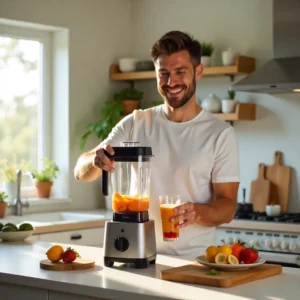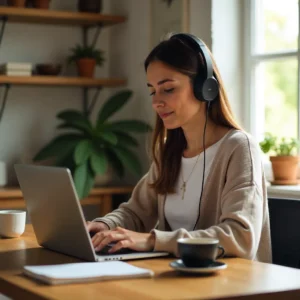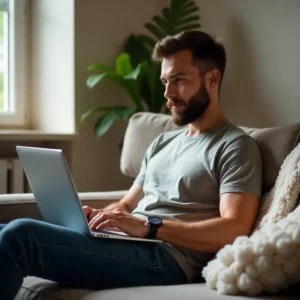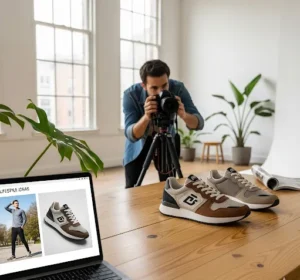
Best Poses and Angles for Lifestyle E-Commerce Photography
Lifestyle e-commerce photography is more than just taking a clear photo of a product; it’s about showing how that product fits into real life. When shoppers see items in use, they connect with them on a personal level and imagine owning them. The right poses and angles can make this possible, helping brands stand out in a crowded online market. It gives products a sense of story, showing not just what they are but how they can be used. This approach makes online shopping feel more relatable and trustworthy.
Choosing the best poses and angles is not only about creativity but also about strategy. A simple shift in position can make a product look more stylish, practical, or inviting. Angles highlight details, while natural poses bring out authenticity that buyers love to see. When done right, the photos look less like ads and more like moments from everyday life. This balance between art and marketing is what makes lifestyle product photos so effective. By learning how to use these techniques, sellers can create images that inspire confidence and drive sales.
Why Lifestyle E-Commerce Photography Matters
 Lifestyle e-commerce photography plays a big role in how customers see and trust a product. Unlike plain product shots, lifestyle photos show items being used in real-life settings. This makes online shopping more personal because buyers can imagine how the product would look in their own homes or lives. It helps build trust since people are more likely to purchase something they can visualize in everyday situations. Brands that invest in lifestyle photos often stand out, as their images feel more natural and relatable compared to basic catalog shots.
Lifestyle e-commerce photography plays a big role in how customers see and trust a product. Unlike plain product shots, lifestyle photos show items being used in real-life settings. This makes online shopping more personal because buyers can imagine how the product would look in their own homes or lives. It helps build trust since people are more likely to purchase something they can visualize in everyday situations. Brands that invest in lifestyle photos often stand out, as their images feel more natural and relatable compared to basic catalog shots.
Using lifestyle e-commerce photography can also improve sales and customer engagement. The right image can tell a story and connect with emotions, which makes a big difference in a competitive market. It’s not just about showing the product but about showing the experience that comes with it.
To make lifestyle photos more effective, here are some simple suggestions:
- Use natural lighting whenever possible for a warm and real look
- Place products in settings where they would normally be used
- Encourage models to act naturally instead of posing stiffly
- Keep the background simple so the focus stays on the product
- Take several angles to show both details and overall use
Building Trust Through Real-Life Product Images
Trust is one of the most important factors in online shopping, and real-life product images play a big role in building it. When shoppers only see plain product photos, they may hesitate because they cannot fully picture how the item looks or works in real situations. Lifestyle e-commerce photography helps solve this by showing products in natural use, if it’s clothing worn by a person or a gadget being used in a daily setting. These kinds of photos make the product feel more genuine, which reduces doubt and increases confidence. When buyers trust what they see, they are more likely to complete a purchase.
 To make product images trustworthy, it’s important to show them in a way that feels honest and relatable. Over-edited or unrealistic photos can make customers question the quality of the product. Instead, lifestyle shots should highlight how the product looks in everyday life, keeping it simple and believable. This creates a strong connection between the buyer and the brand, making the shopping experience more reliable.
To make product images trustworthy, it’s important to show them in a way that feels honest and relatable. Over-edited or unrealistic photos can make customers question the quality of the product. Instead, lifestyle shots should highlight how the product looks in everyday life, keeping it simple and believable. This creates a strong connection between the buyer and the brand, making the shopping experience more reliable.
Here are some tips to keep in mind:
- Use natural settings that match where the product will normally be used
- Avoid heavy filters or editing that change the product’s real look
- Show multiple angles so buyers can clearly see details
- Include people in the photos, when possible, to make the product feel more relatable
- Keep the product as the main focus while still blending naturally into the scene
Poses That Make Products Look Natural
 Natural poses can make lifestyle e-commerce photography feel more believable and appealing. Instead of stiff or overly staged positions, relaxed poses show how products fit into daily life. For example, a model sitting comfortably with a cup, walking casually in sneakers, or typing on a laptop gives the product a real purpose. These kinds of poses help shoppers picture themselves using the product without feeling like they are looking at an ad. The more natural and effortless the pose, the more inviting the image becomes.
Natural poses can make lifestyle e-commerce photography feel more believable and appealing. Instead of stiff or overly staged positions, relaxed poses show how products fit into daily life. For example, a model sitting comfortably with a cup, walking casually in sneakers, or typing on a laptop gives the product a real purpose. These kinds of poses help shoppers picture themselves using the product without feeling like they are looking at an ad. The more natural and effortless the pose, the more inviting the image becomes.
When planning lifestyle shots, it’s important to keep the focus on how the product is being used in a normal setting. A good pose should never look forced because buyers notice when something feels staged. Instead, aim for movements and gestures that flow naturally. This approach not only highlights the product but also creates a warm, relatable mood in the photo.
To make poses work better, here are some tips:
- Ask models to act as if they are using the product in real life
- Use sitting, standing, or leaning poses that feel comfortable
- Add light movements, like walking or holding an item casually
- Encourage natural facial expressions, such as smiling softly or looking thoughtful
- Avoid stiff arms and awkward hand placements that make the shot look fake
Angles That Highlight the Best Features
 Angles play a big role in lifestyle e-commerce photography because they guide how people see a product. A well-chosen angle can show off important details, make the product look more appealing, and even change the mood of the photo. For example, eye-level shots feel natural and give a realistic view, while side angles can highlight shape and design. Close-up shots bring out textures and small details that might be missed in a wider photo. By mixing angles, you can create a full story that makes the product look more complete and attractive to buyers.
Angles play a big role in lifestyle e-commerce photography because they guide how people see a product. A well-chosen angle can show off important details, make the product look more appealing, and even change the mood of the photo. For example, eye-level shots feel natural and give a realistic view, while side angles can highlight shape and design. Close-up shots bring out textures and small details that might be missed in a wider photo. By mixing angles, you can create a full story that makes the product look more complete and attractive to buyers.
The key is to choose angles that not only show the product clearly but also add personality to the photo. Different items may need different perspectives to look their best. A fashion item might benefit from a full-body angle, while a food photo may shine with a top-down view. Testing angles during a shoot can help find the most flattering and effective perspective.
To get the best results, keep these tips in mind:
- Use eye-level angles for a natural and relatable look
- Try side or angled shots to highlight shape and depth
- Include close-ups for details like texture, patterns, or material
- Use overhead shots for flat lays and modern-style images
- Take multiple angles to give customers a complete view
How Lifestyle E-Commerce Photography Boosts Sales
 Lifestyle e-commerce photography helps increase sales because it shows products in a way buyers can easily relate to. Instead of just displaying an item on a plain background, lifestyle photos show how it fits into everyday life. This makes the shopping experience feel more real and personal, which often leads to higher trust in the product. When customers can see how an item looks in use, they are more confident about buying it. Photos that feel natural also make online stores look more professional, giving buyers a reason to choose one brand over another.
Lifestyle e-commerce photography helps increase sales because it shows products in a way buyers can easily relate to. Instead of just displaying an item on a plain background, lifestyle photos show how it fits into everyday life. This makes the shopping experience feel more real and personal, which often leads to higher trust in the product. When customers can see how an item looks in use, they are more confident about buying it. Photos that feel natural also make online stores look more professional, giving buyers a reason to choose one brand over another.
Good lifestyle photos also create stronger emotional connections with shoppers. A product shown in the right setting can make people imagine how it would improve their life or routine. This connection often encourages faster decision-making and repeats purchases. Lifestyle photography can also set a brand apart from competitors by making the online store feel more appealing and authentic.
To use lifestyle images effectively, here are some suggestions:
- Place products in real settings that match how customers will use them
- Highlight the benefits or unique features through poses and angles
- Show people using the products naturally to build trust
- Keep photos consistent with the brand’s style and message
- Use a mix of wide shots and close-ups to tell a complete story
Tips for Getting the Best Results in Lifestyle E-Commerce Photography
 Getting the most out of lifestyle e-commerce photography means paying attention to both small details and overall presentation. Lighting, background, and styling all play a role in how the final photo looks. Natural light often works best because it makes products appear fresh and real, while clutter-free backgrounds keep attention on the item. It’s also helpful to plan the shoot ahead of time, knowing what story or mood you want the photos to show. A clear direction will save time and produce stronger results.
Getting the most out of lifestyle e-commerce photography means paying attention to both small details and overall presentation. Lighting, background, and styling all play a role in how the final photo looks. Natural light often works best because it makes products appear fresh and real, while clutter-free backgrounds keep attention on the item. It’s also helpful to plan the shoot ahead of time, knowing what story or mood you want the photos to show. A clear direction will save time and produce stronger results.
Consistency is also key when building a collection of lifestyle photos. Keeping the same style across all images makes the online store look more professional and reliable. Testing different setups and reviewing which images get the best response can also guide future shoots. Remember, the goal is to make the product look useful, relatable, and worth buying.
Here are some simple tips to follow:
- Use natural lighting to create warm and real-looking photos
- Keep the background simple so products stay in focus
- Plan poses and angles before the shoot to save time
- Stick to a consistent photo style for a professional look
- Review customer feedback to see which photos perform best
Conclusion
Lifestyle e-commerce photography is more than just a trend; it’s a way to build trust, connect with buyers, and make products stand out in a busy online market. The right mix of poses and angles can turn a simple photo into a story that feels real and relatable. By focusing on natural movements, clear details, and thoughtful setups, sellers can create images that not only look good but also inspire customers to make a purchase. Consistency and creativity are key to getting results that last. What do you think? Do natural lifestyle photos make you more likely to buy a product online? Share your thoughts in the comments, we’d love to hear your take!
Read Next: 7 Reasons Why Furniture Photo Editing Can Improve Your Sales





